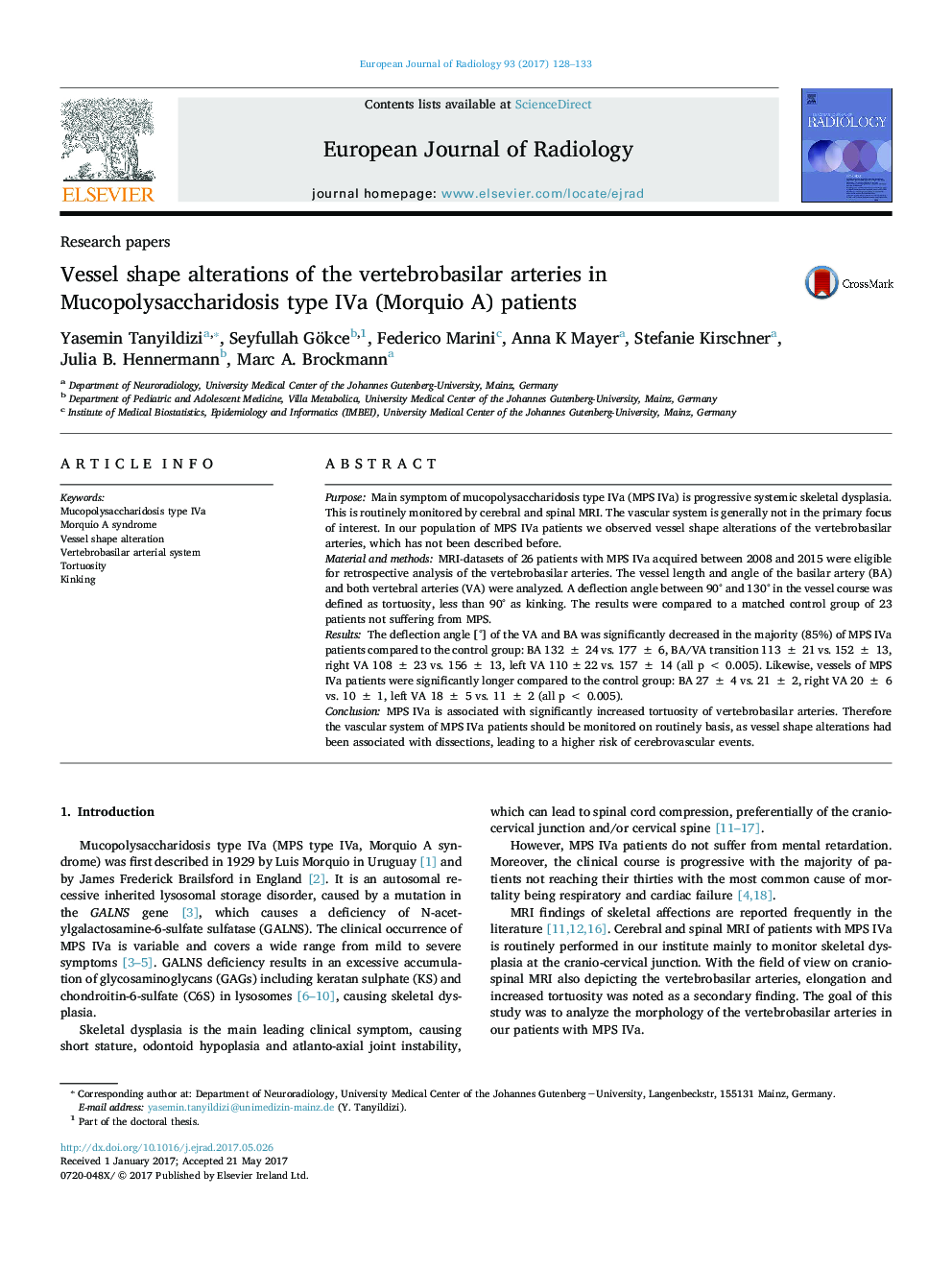| Article ID | Journal | Published Year | Pages | File Type |
|---|---|---|---|---|
| 5726066 | European Journal of Radiology | 2017 | 6 Pages |
â¢Significantly increased tortuosity of vertebrobasilar arteries could be identified in MPS IVa patients.â¢Age, gender or body length do not correlate with vessel length/tortuosity in MPS VIa patients.â¢The vascular system of MPS IVa patients should be monitored on routinely basis, as vessel shape alterations had been associated with dissections, leading to a higher risk of cerebrovascular events.
PurposeMain symptom of mucopolysaccharidosis type IVa (MPS IVa) is progressive systemic skeletal dysplasia. This is routinely monitored by cerebral and spinal MRI. The vascular system is generally not in the primary focus of interest. In our population of MPS IVa patients we observed vessel shape alterations of the vertebrobasilar arteries, which has not been described before.Material and methodsMRI-datasets of 26 patients with MPS IVa acquired between 2008 and 2015 were eligible for retrospective analysis of the vertebrobasilar arteries. The vessel length and angle of the basilar artery (BA) and both vertebral arteries (VA) were analyzed. A deflection angle between 90° and 130° in the vessel course was defined as tortuosity, less than 90° as kinking. The results were compared to a matched control group of 23 patients not suffering from MPS.ResultsThe deflection angle [°] of the VA and BA was significantly decreased in the majority (85%) of MPS IVa patients compared to the control group: BA 132 ± 24 vs. 177 ± 6, BA/VA transition 113 ± 21 vs. 152 ± 13, right VA 108 ± 23 vs. 156 ± 13, left VA 110± 22 vs. 157 ± 14 (all p < 0.005). Likewise, vessels of MPS IVa patients were significantly longer compared to the control group: BA 27 ± 4 vs. 21 ± 2, right VA 20 ± 6 vs. 10 ± 1, left VA 18 ± 5 vs. 11 ± 2 (all p < 0.005).ConclusionMPS IVa is associated with significantly increased tortuosity of vertebrobasilar arteries. Therefore the vascular system of MPS IVa patients should be monitored on routinely basis, as vessel shape alterations had been associated with dissections, leading to a higher risk of cerebrovascular events.
